

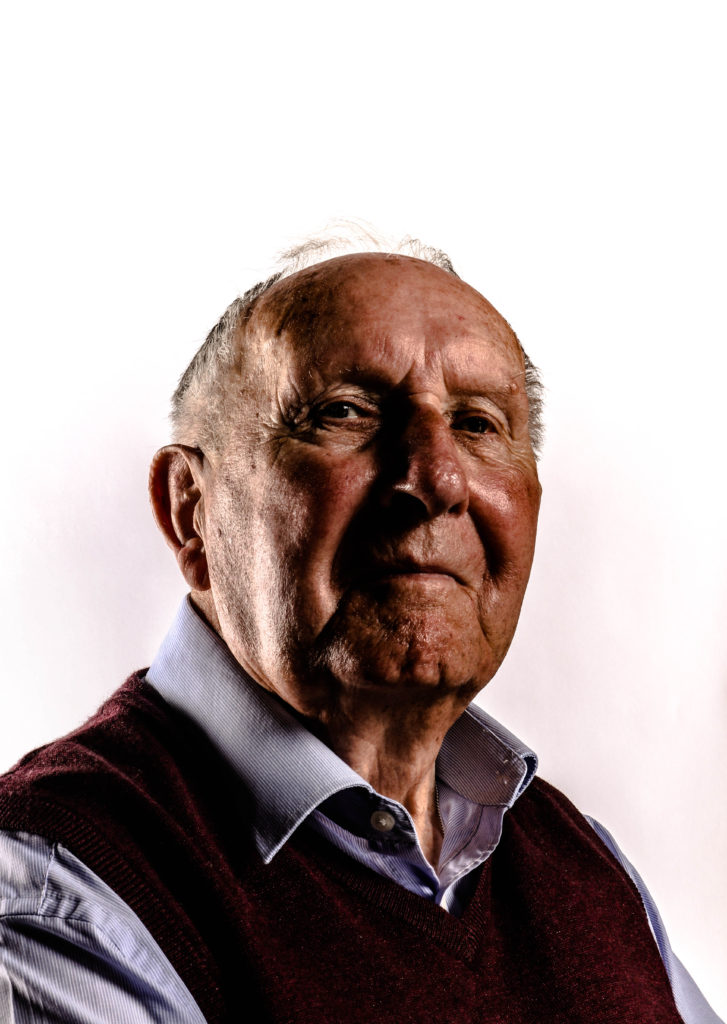
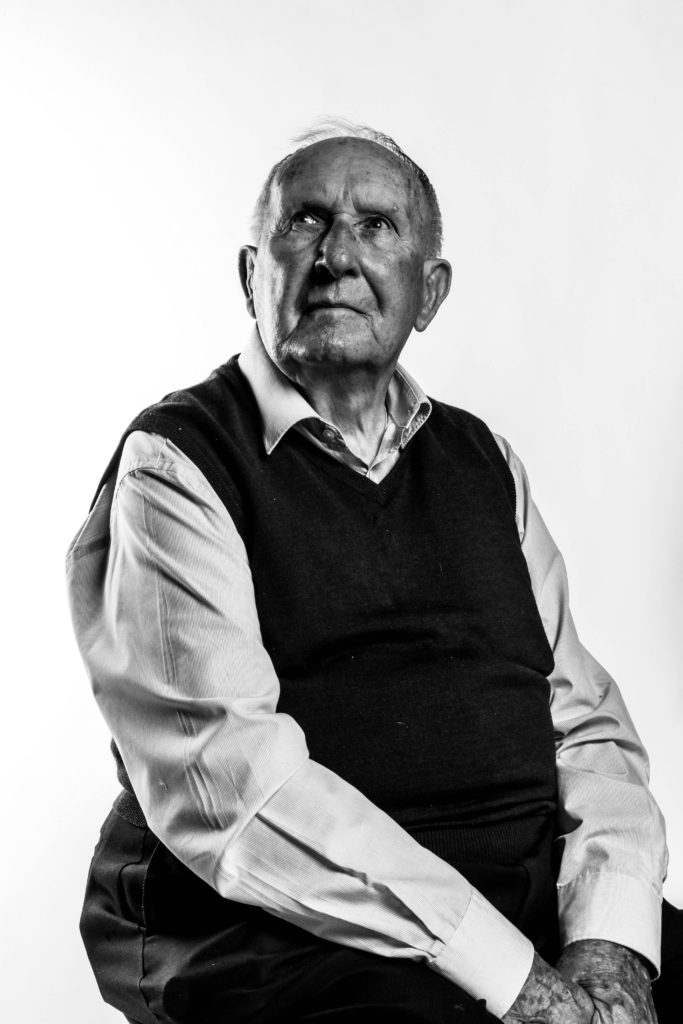
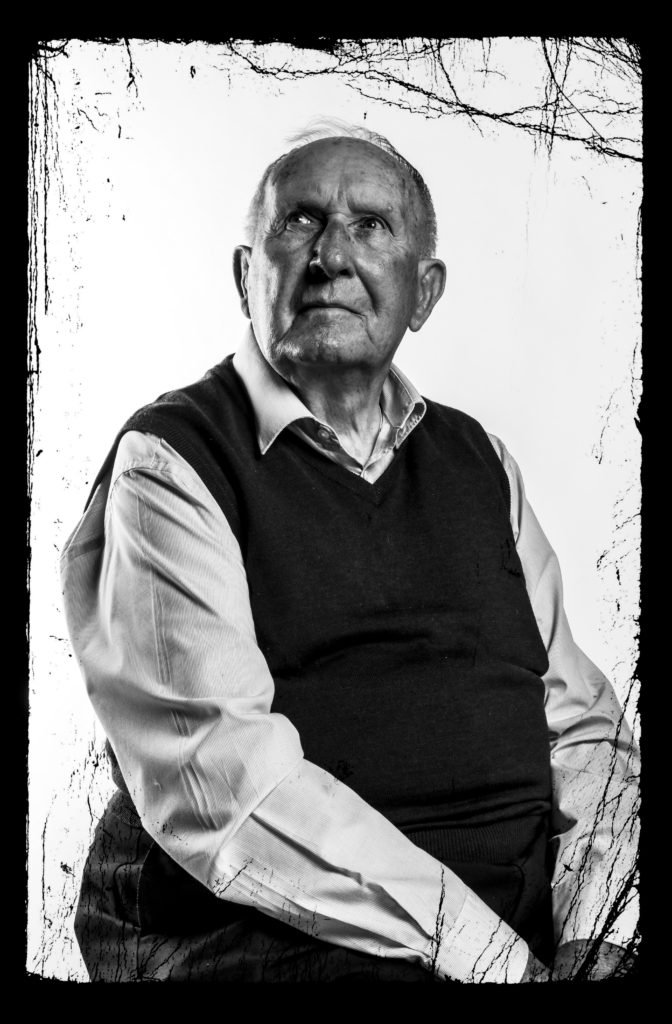
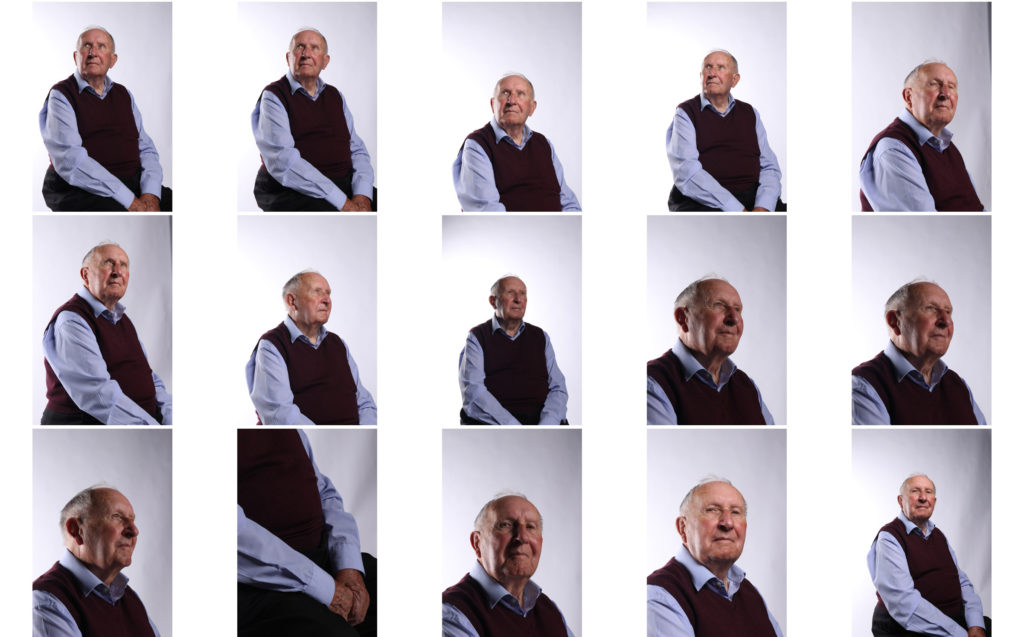






William Collie
Overview – William Collie was one of the first photographers to use Fox Talbot’s calotype process in Jersey. Collie was originally born in Skene, Aberdeenshire, Scotland in October 1810 and like many other early photographers, started his professional life as a portrait painter. He moved south and is recorded as living in St Helier, Jersey, before 1841, where he had a portrait business. He became one of the earliest photographers working in the Channel Islands, operating from Belmont House, St Helier, until 1872. In the late 1840s he made a series of genre calotype portraits depicting ‘French and Jersey Market Women’.

Image Analysis –
Michelle Sank – Insula
Overview – Sank is well known for her ‘youth work’ among other projects: thematic series of portraits of young adults, often those dealing with an adolescent struggle to find their place in the world or define their identity. Her ability to evoke these human states through a direct yet deceptively potent vision. Writing about Sank’s work, the photographer David Goldblatt has observed: “Michelle Sank uses a simplicity of means that falls way below the zealous art critic’s qualifying level for success. She attempts a portraiture in which the familiar is rendered quietly, never bizarrely, new.’ Her subjects ‘seem, completely, themselves; Sank has allowed each one of them simply to be. Yet it is not a passive state, something has been evoked that seems to come from deep within…an essence which is not ordinary at all. It is the unique spirit of the other person.”
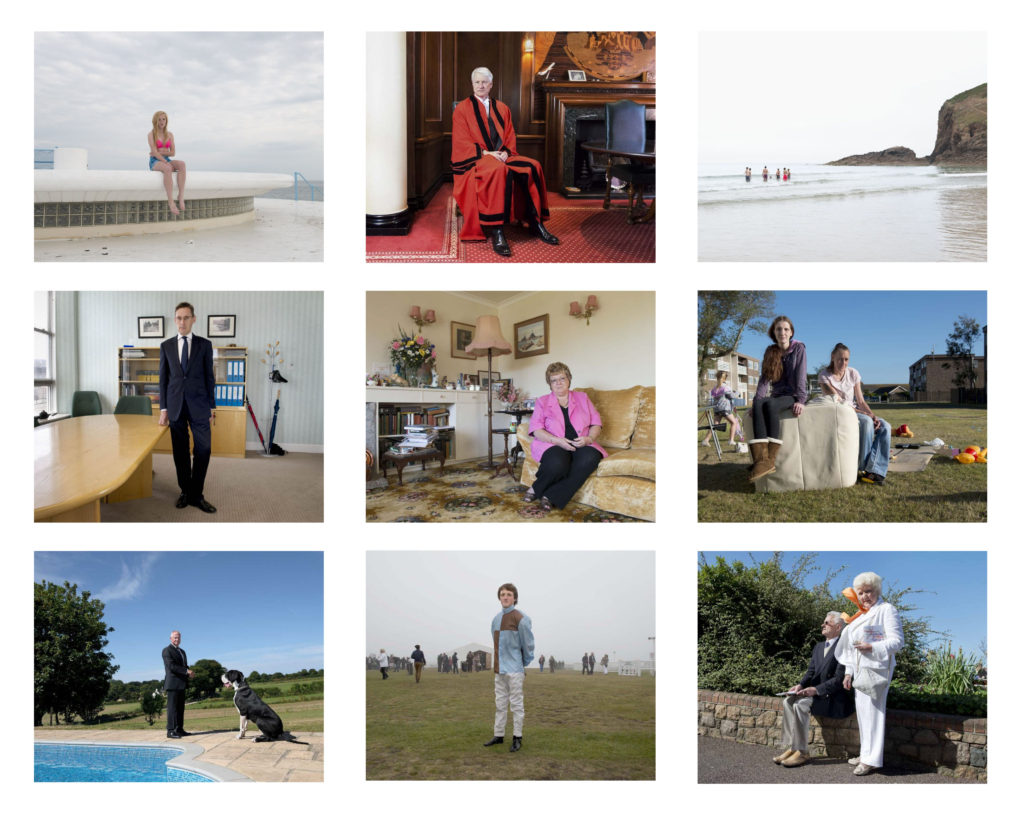
Image Analysis –
Sources – William Collie:
https://www.theislandwiki.org/index.php/William_Collie
Sources – Michelle Sank:
http://www.michellesank.com/portfolios/insula
http://www.archisle.org.je/wp-content/uploads/Michelle-Sank_Insula.pdf

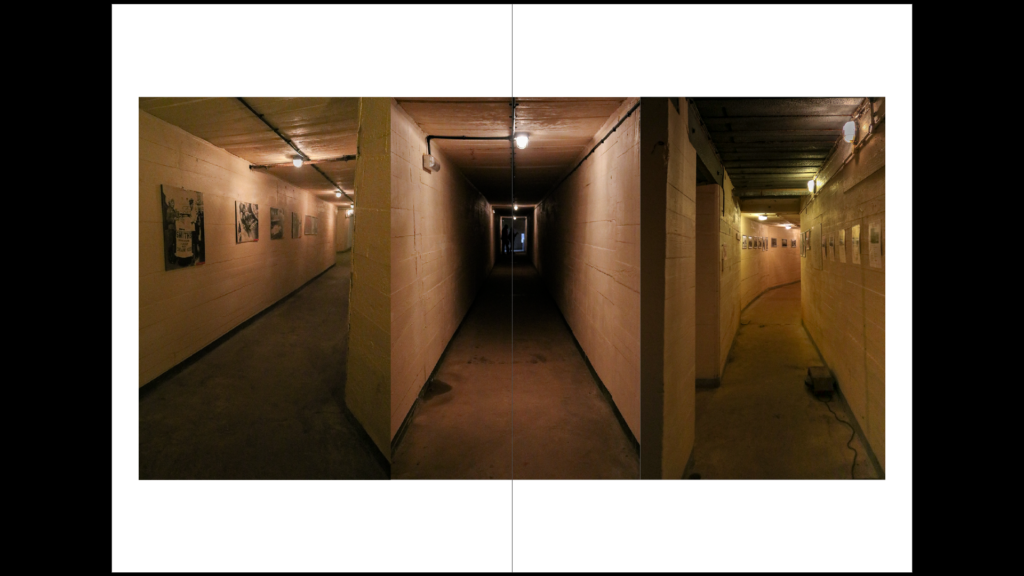
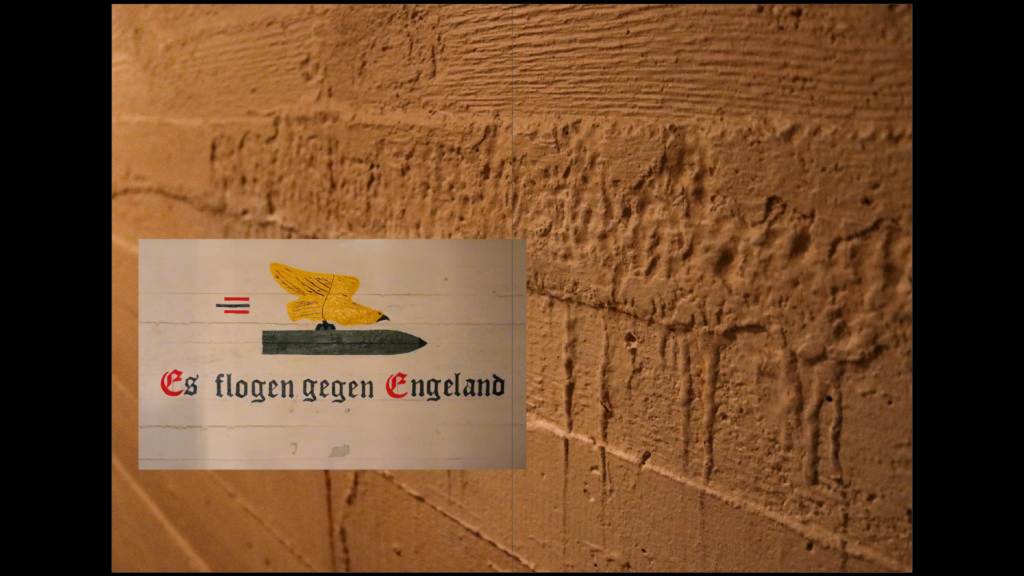


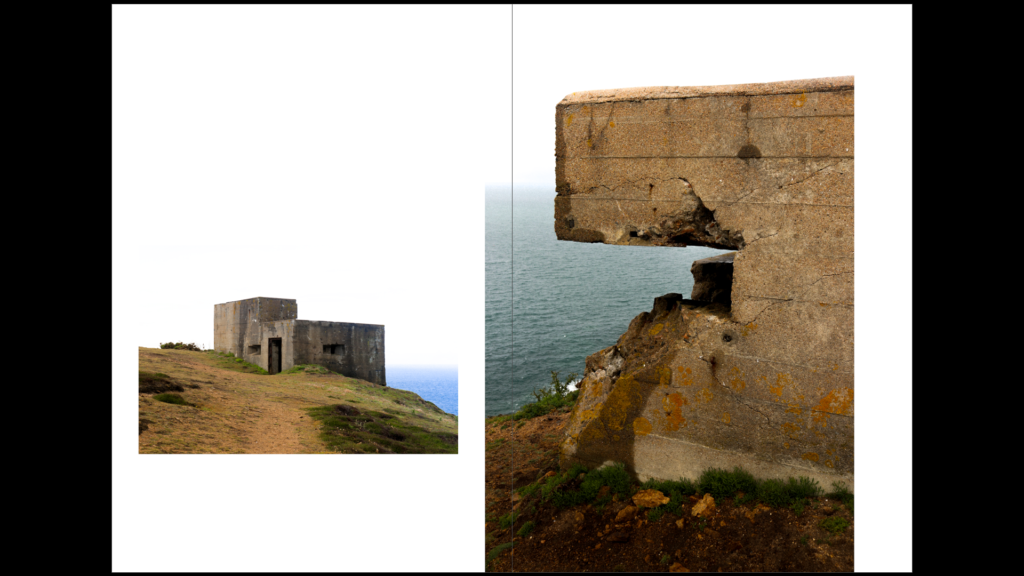

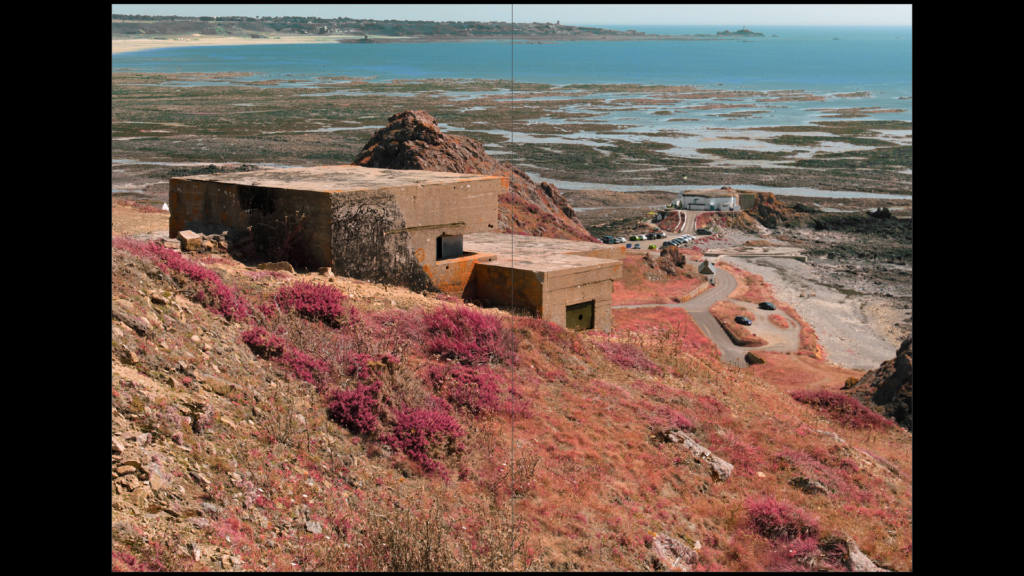
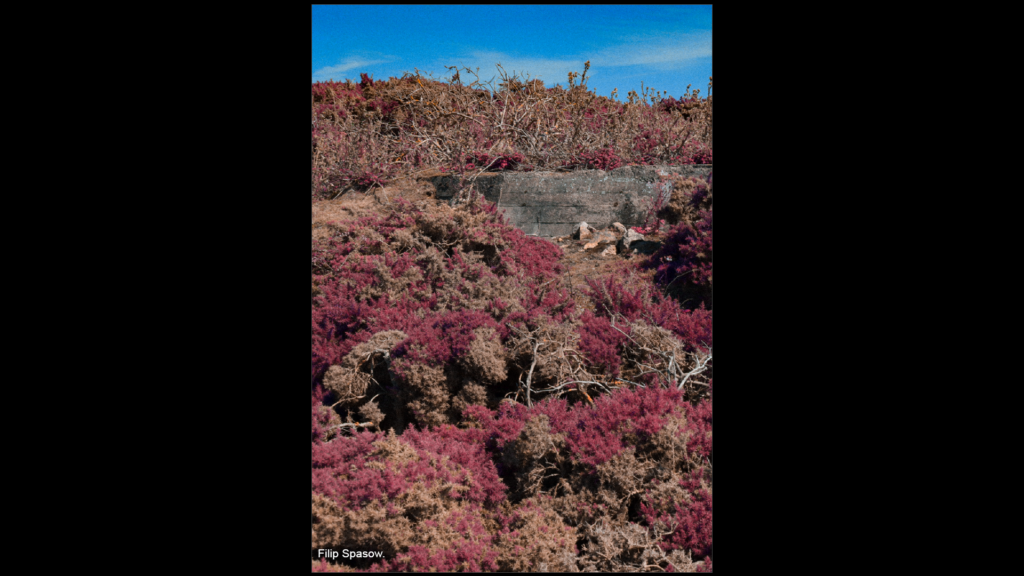
Design and Layout
Format– Portrait, A5, paperback book. Sequencing, Layout + Design – comparisons between shape and objects (create a more fluid transition between photo “scenes”), off center images, close ups, Images of nature taking over the bunkers, overgrowth, human development over/ around the bunkers. Close ups of the walls and textures of the bunkers inside. Narrative – streamlined/fluid, beginning with interior of the Batterie Moltke bunker. Then – focused on close ups + details of the the walls, transitioning from interior (mainly un-affected by nature) to exterior, ‘monoliths’ and weaponry overgrown and exposed to the elements, later moving onto the overgrowth itself on exterior walls and then introducing a few heavily edited images and a few landscapes of the affecting growth. little to no text, no personal bias or views towards the bunker site, recording the site as it is. Possibly be untitled, possibly a minimalist title, e.g: Bunkers? Visual context: infrared edited images, Lynda Laird’s use of edited grass and shrubs to be a brighter colour leads to overgrowth standing out more than the bunkers and becoming the focus of the image.
Research and Influences
Lynda Laird – Infrared
Laird’s infrared photography of the bunkers in Normandy have influenced me to edit some of my images for my zine to have an infrared effect. I like the effect that Laird’s images have on the surrounding plants as the bright red colour shifts the focus from the bunker and onto the vegetation that is growing around and inside it. I believe this is effective as the images focus more on nature taking over the bunkers.
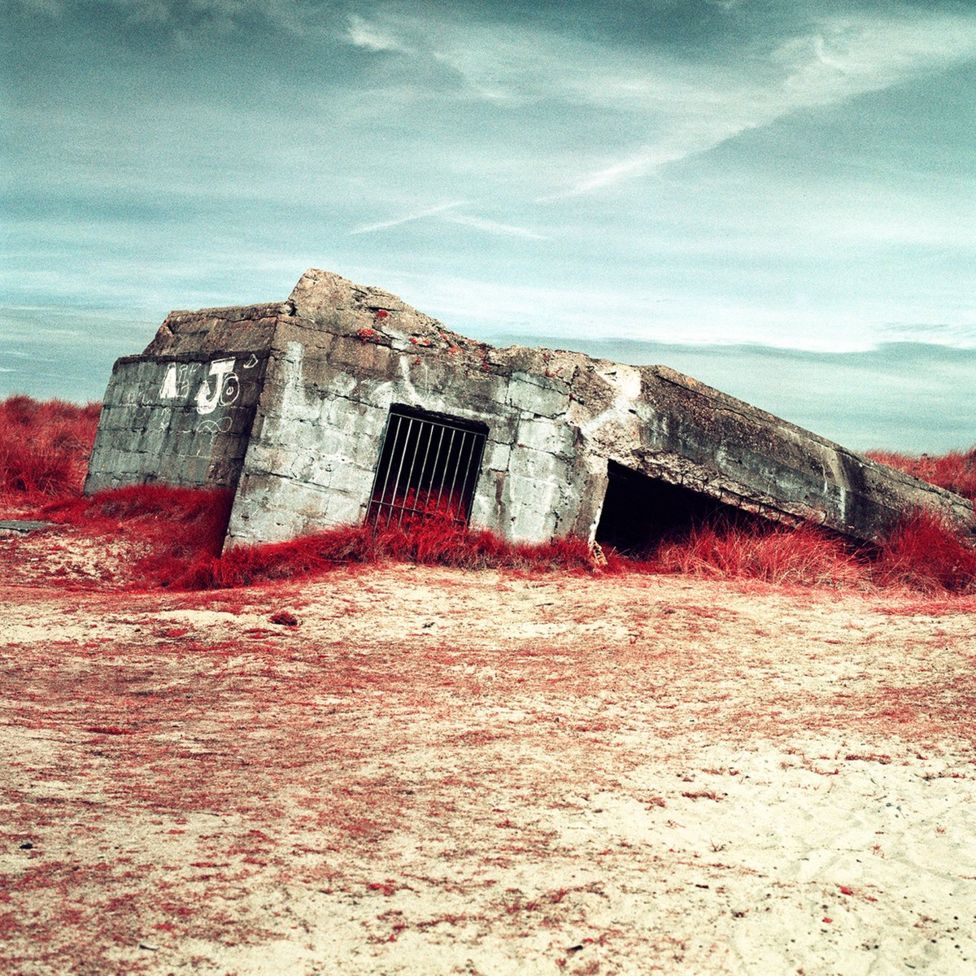
Paul Virilio
Virilio’s bunker archaeology photographs are interesting to me as they document the bunkers as monuments which are part of nature. I believe the use of a black and white photograph to document the bunker is effective as it helps blend it into nature due to having similar shades of black and white. From Virilio’s photography, however, I would like to include images where the bunkers are viewed as monuments.

For this shoot, my primary aim was to take images of objects and scenery which I wasn’t able to on the field trip (First site visit) due to poor weather. My second aim for the shoot was also to take higher quality images with better lighting as the lighting inside the bunker was quite dim.
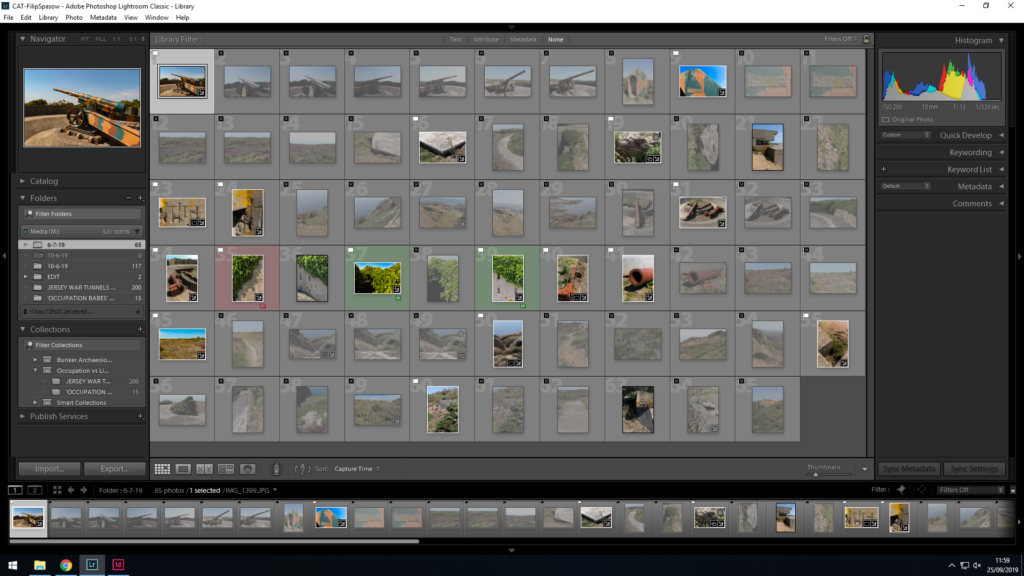
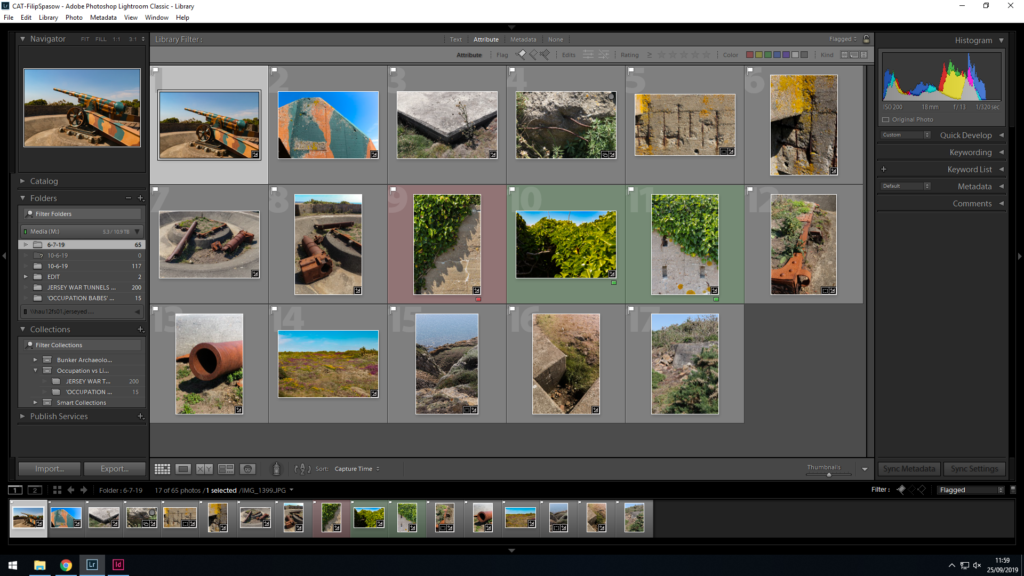

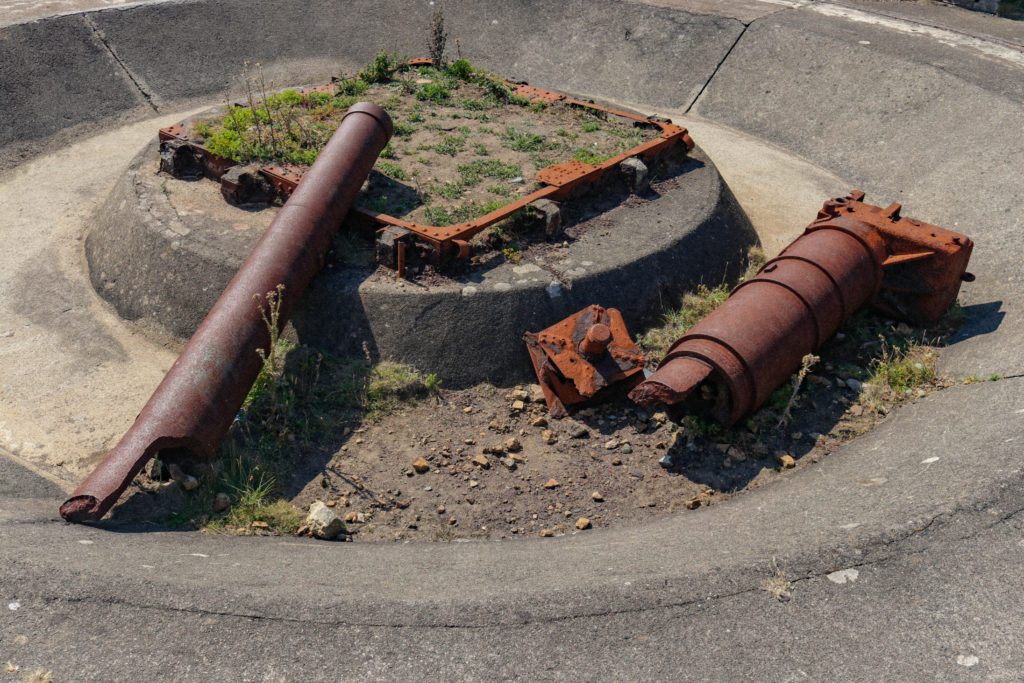
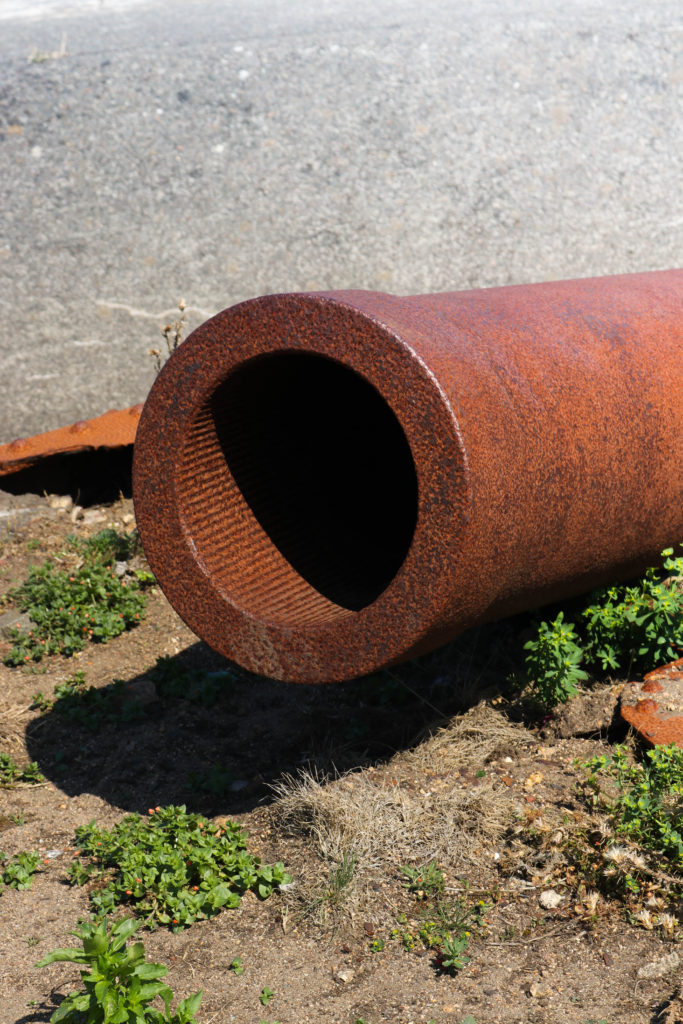
Paul Virilio
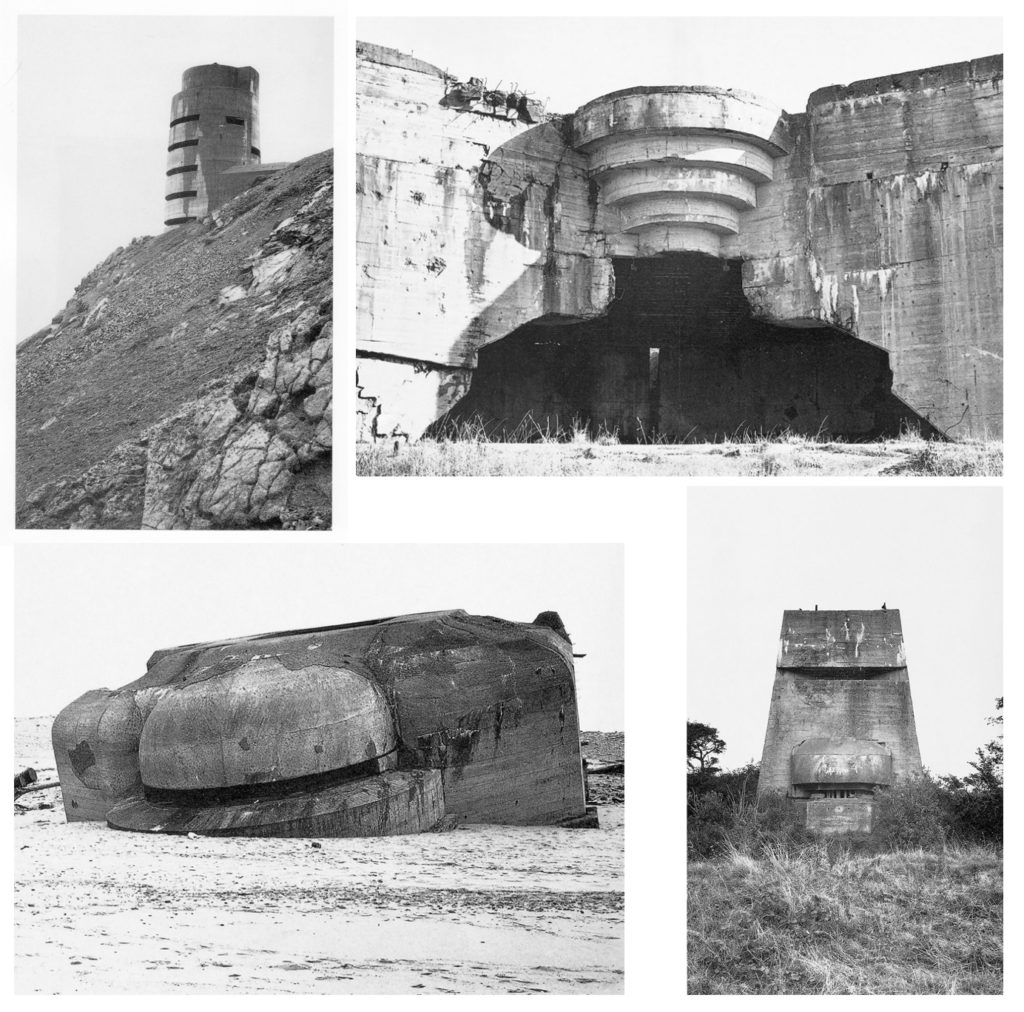
Lynda Laird
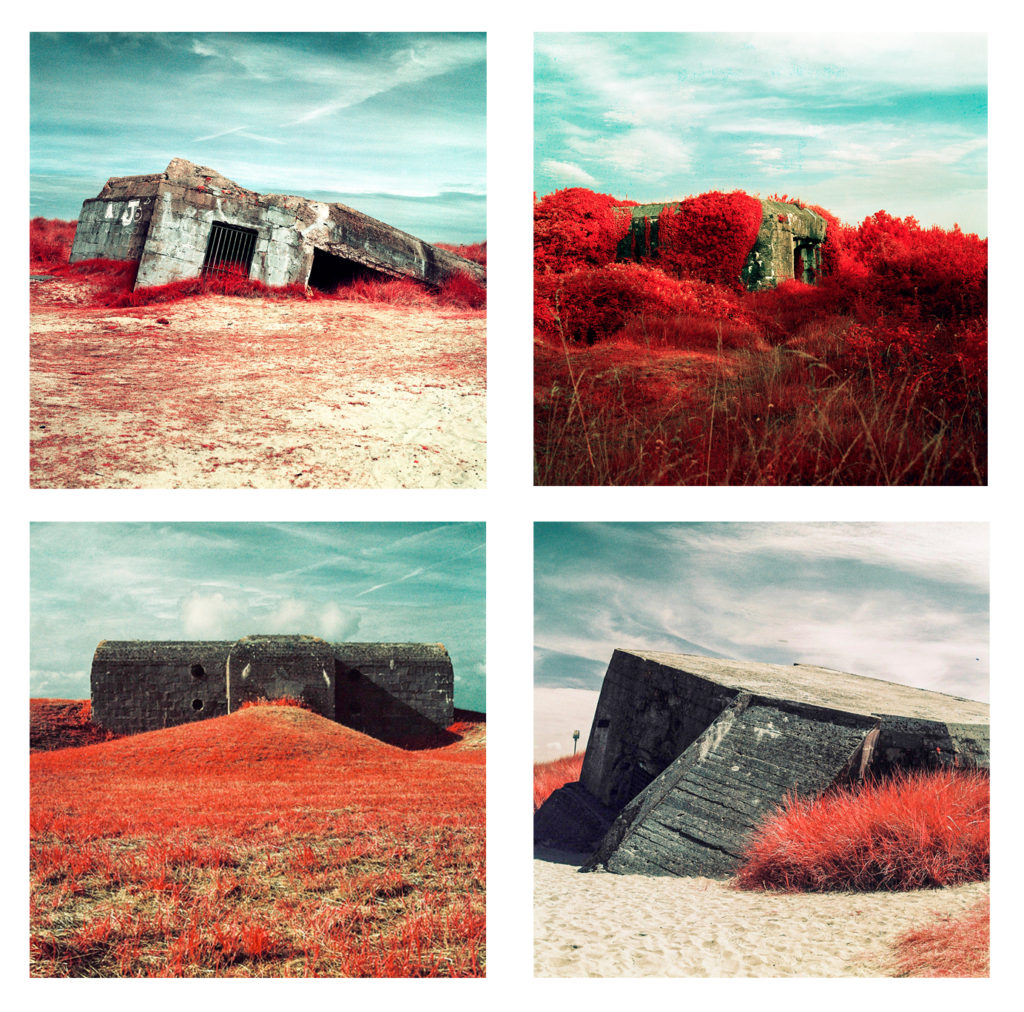
Raoul Hausmann
Hausmann was a founding member of the dadaist movement group, and was the first to develop photomontage as a tool of satire and political protest in 1915. Hausmann’s collages also had a profound influence on the European avant-garde following the aftermath of World War One. his photo-montage pieces were made up of original images and from magazines or newspapers.


Own Responses To Photo-montage
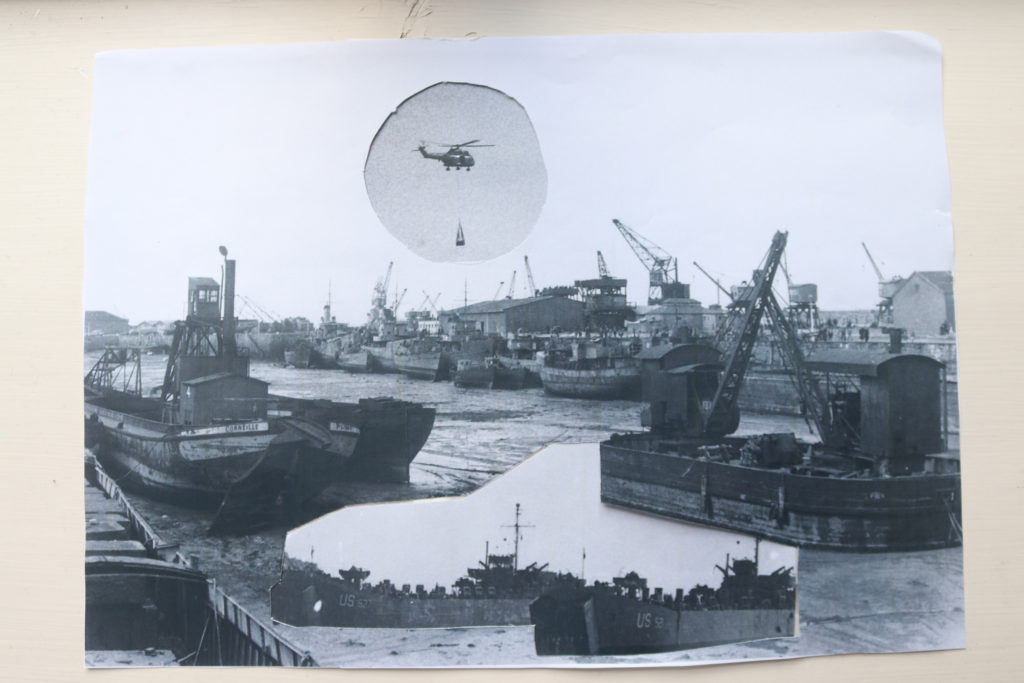
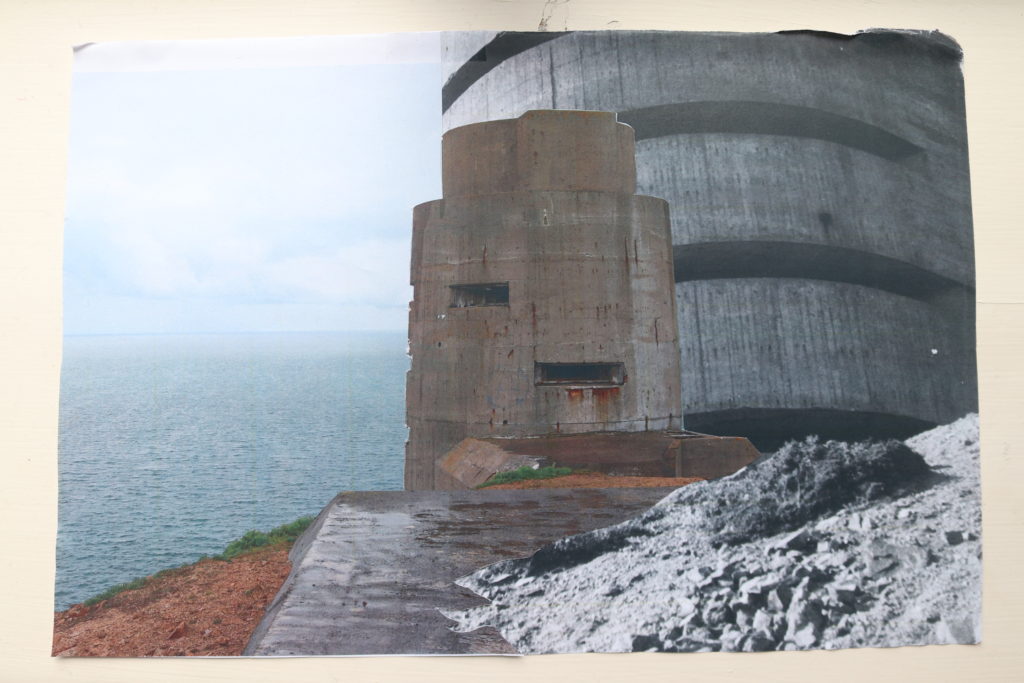
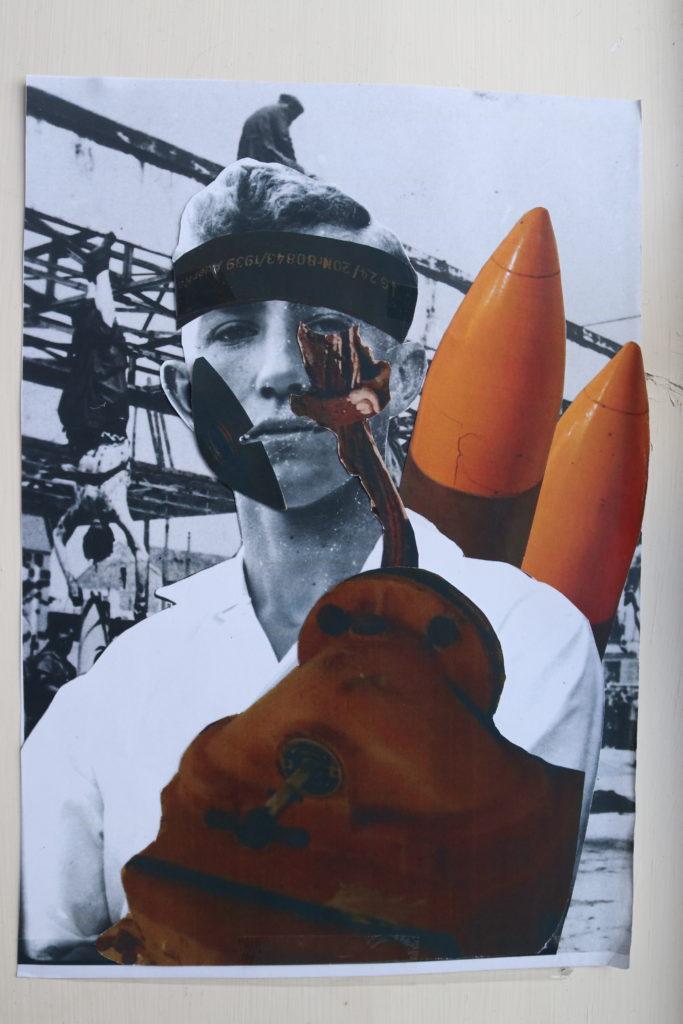

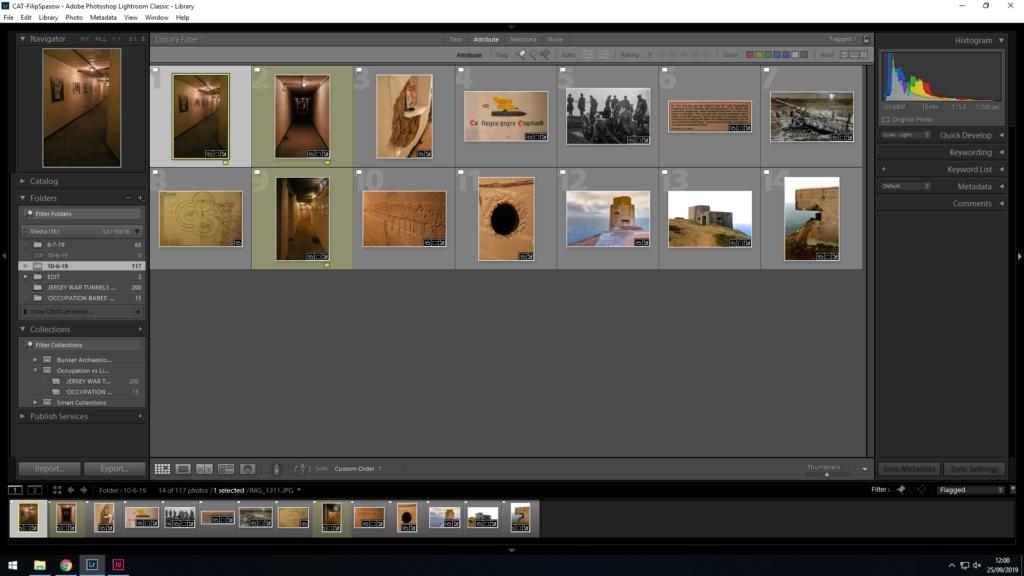

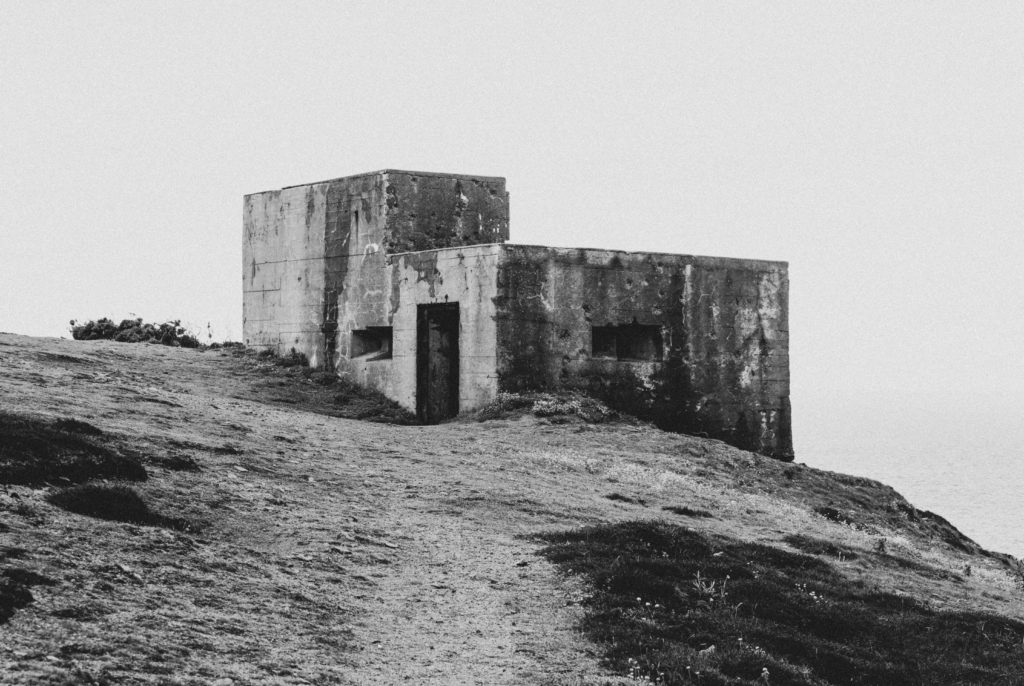

The Photographic Archive of the Société Jersiaise contains over 80,000 images dating from the mid-1840s to the present day (with around 36,000 images from the collection being digitally transferred onto the
Société’s online archive) and is the principal Jersey collection of nineteenth and early twentieth century photography. On the 9th of May 1840 photography; in it’s early development, was introduced to Jersey. Just nine months after first being publicised in urban centres of England and France.
During the visit to the archive, I learnt about a few of the major pioneering photographers of Jersey; these include Will Collie, Charles Hugo, Thomas Sutton, and Henry Mullins, Their subjects, and methods of developing their photographs.
https://societe-jersiaise.org/photographic-archive

Following the introduction to the photographic archives, we were shown a few folders containing archived photographs taken during the occupation of jersey. Their subject matter also varied; such as lifestyle and development of coastal defences, taken by German soldiers and local islanders with photography permits. While viewing the images we also recorded archive numbers onto a check sheet, to request digitised versions of any images which we found interesting.

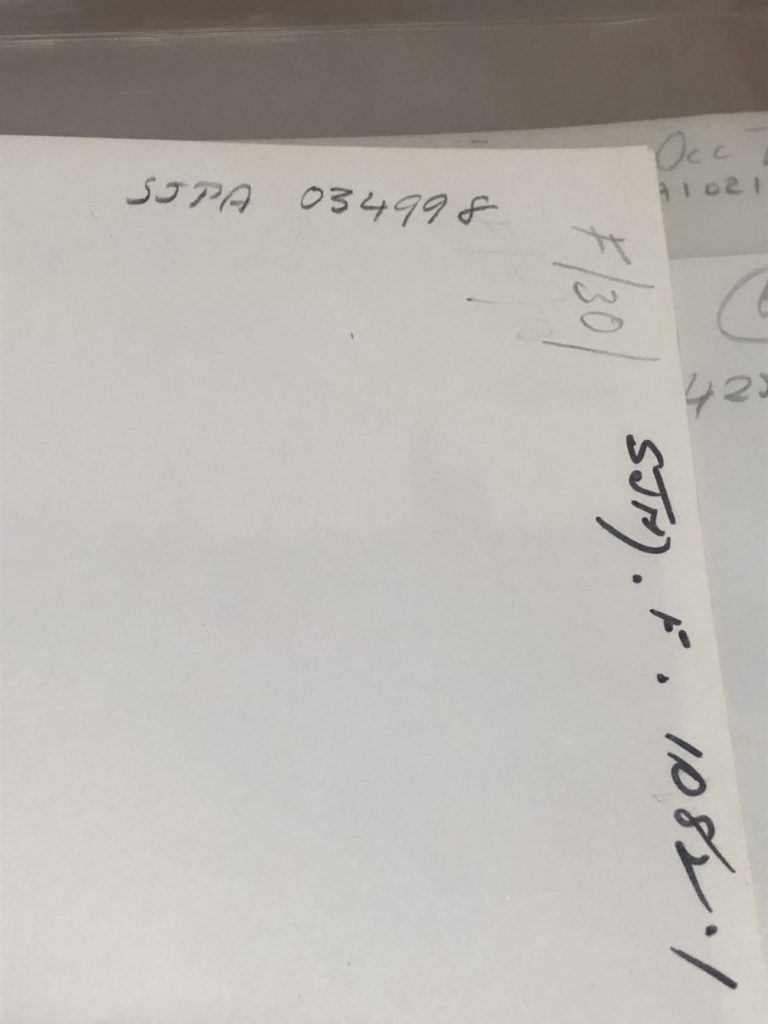
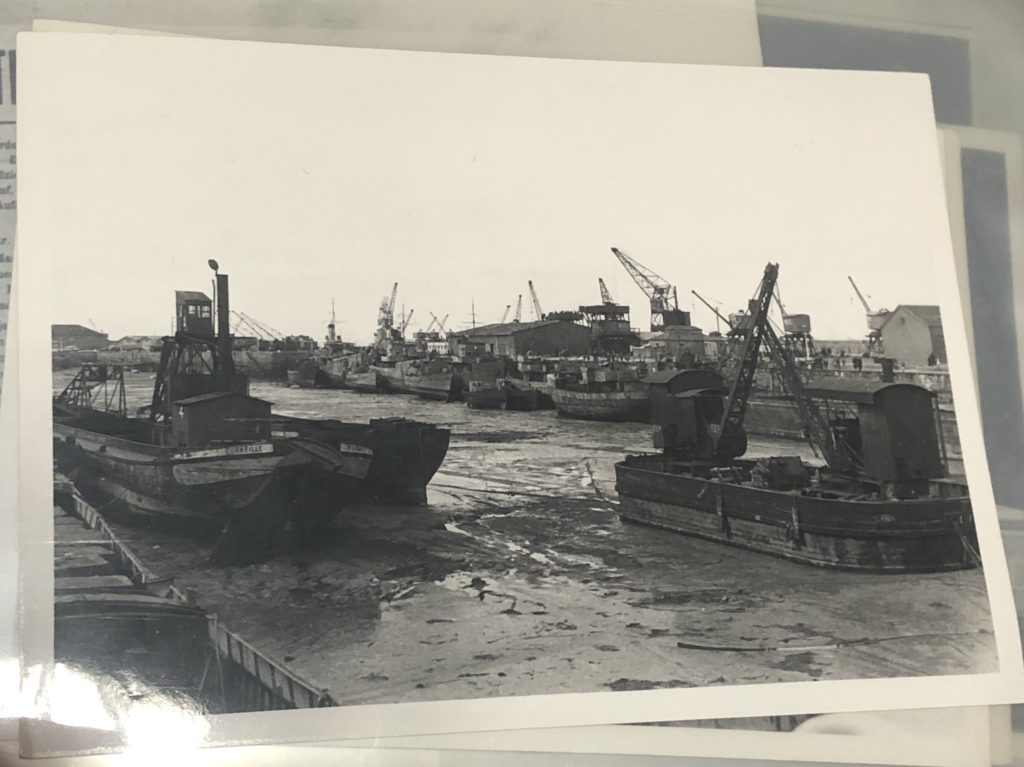
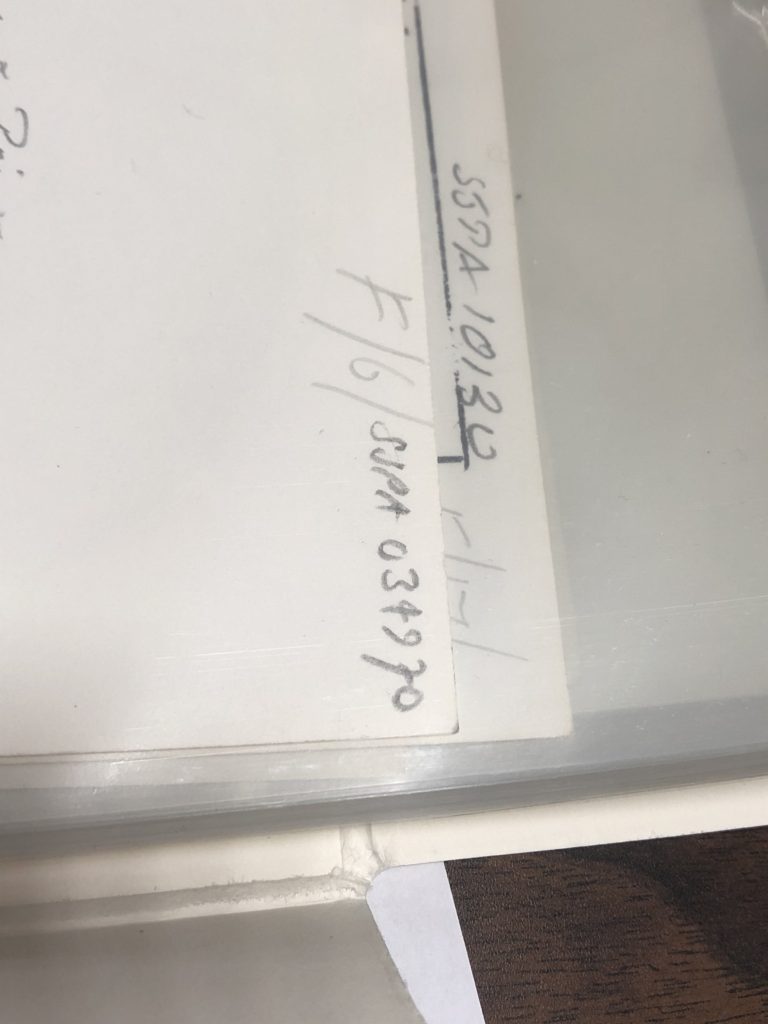
Afterwards we were arranged into groups and all given the same pack of photographs to arrange into a narrative. For my group’s narrative, we decided upon condensing the pack into twelve final images, where there were four different images in three scenarios; armament development, guarding the coasts, and lifestyle, respectively. All in ascending order of a focused, simple subject, developing into a larger scene.
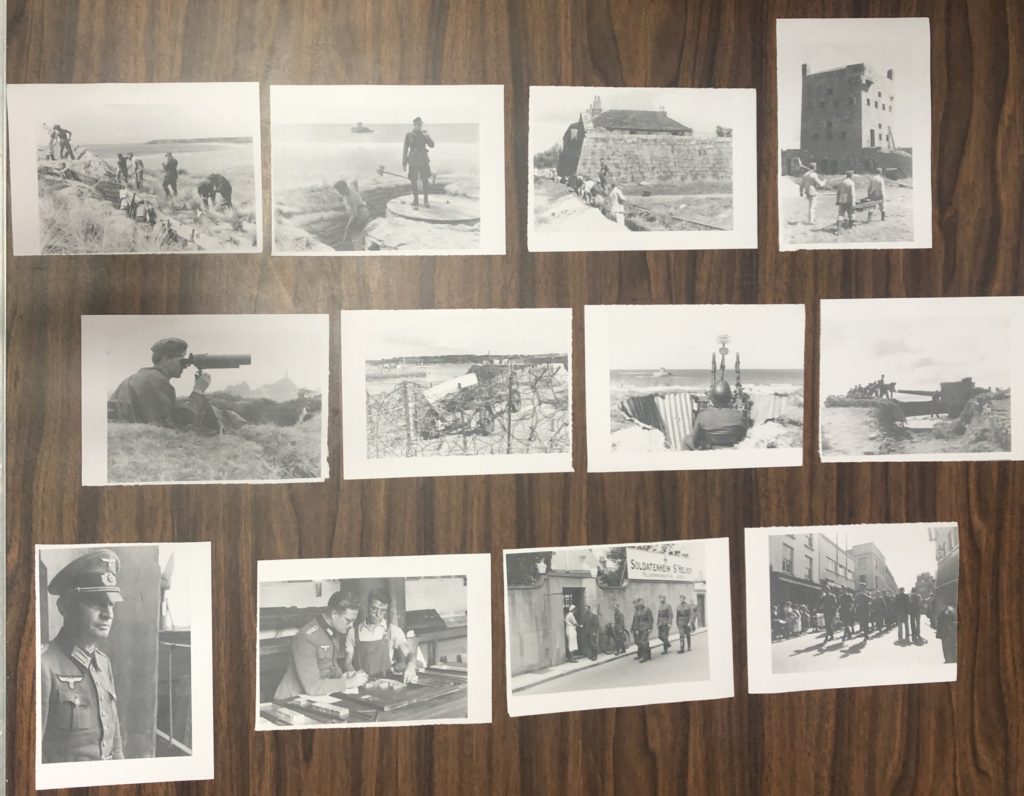
The German Occupation of Jersey began one week after the British government had demilitarized the island fearing for the safety of civilians should there be any conflict. On the 28th of June 1940, the German Air Force, not knowing of the demilitarization of the island, bombed multiple sites on the island; including civilian farming lorries which were mistaken for troop carriers, killing 10 civilians and wounding many more.
Soon-after, on July 1st 1940, General Richthofen, The Commander of the German Air Forces in Normandy, dropped an ultimatum from the air demanding the immediate surrender of the island. White flags and crosses were placed in prominent positions, as specified by the Germans, and later that day Jersey was occupied by air-borne troops under the command of Hauptmann Gussek.
Under German command, the timezone was changed to Eastern Day Time, vehicles were ordered to drive on the right side of the road, the use of radio was banned, access to news from the mainland was negligible and attempts by civilians at making their own radio sets risked imprisonment. Shortages to supplies like food and fuel also began to dwindle, and by the time of the D-Day attacks and control of France was regained, the delivery of German supplies which fueled Jersey ceased.
Shopping hour schedules also became tighter as goods became scarce. By the time almost all supplies had run out, the SS Vega Red Cross ship arrived, delivering supply parcels. These proved as ‘lifelines’ for the civilians.
Hitler ordered the conversion of Jersey into an impregnable fortress. Thousands of slave workers from countries like Russia, Spain, France, Poland, and Algeria built hundreds of bunkers, anti-tank walls, railway systems, as well as many tunnel complexes. In late 1943 the Tunnel Complex Ho8 in St. Lawrence was converted from an artillery workshop and barracks to an emergency casualty clearing station able to cope with up to 500 patients.. All of the fortifications built around the island were part of Hitler’s “Atlantic Wall”.